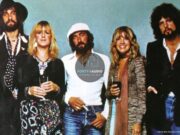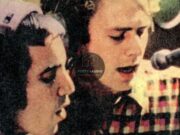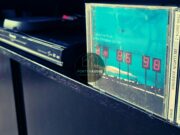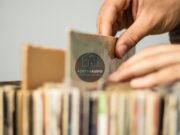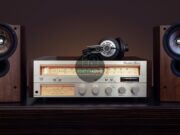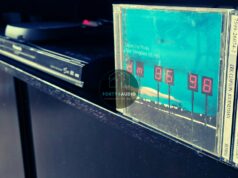Why CDs Beat Spotify for Sound and Artist Support
In an era where music is often consumed with a quick tap, it’s easy to forget the tactile and sonic joys of compact discs. But for those who care about sound quality, the listening experience, and – perhaps most importantly – supporting the artists behind the music, CDs still hold a powerful place. As audio journalist John Darko and musician Mary Spender have recently emphasized, the numbers behind streaming tell a sobering story. And when you look closer, it becomes clear: CDs aren’t just a nostalgic relic – they’re a meaningful, impactful choice.
The Numbers Tell a Compelling Story
Let’s start with the math. According to Mary Spender, a talented singer-songwriter and YouTube creator, it takes over 4.5 million Spotify streams to earn the equivalent of minimum wage in the United States. That’s not a typo. For an independent artist, that’s a mountain of plays just to scrape by.
Now compare that to physical sales. Selling just one CD can earn an artist the same as 8,333 Spotify streams. That’s a staggering difference. And it’s not just about the payout per unit – it’s about control. When you buy a CD directly from an artist or their label, the majority of that money goes straight to them. With streaming, the revenue is diluted through a complex web of licensing deals, platform cuts, and algorithmic exposure.
Streaming services like Spotify operate on a pro-rata model, meaning your subscription fee doesn’t go directly to the artists you listen to. Instead, it’s pooled and distributed based on total plays across the platform. So even if you only listen to indie folk, your money might be helping fund the latest pop megahit.
CDs Bring an Experience Streaming Can’t Match
There’s something deeply satisfying about holding a CD in your hands. The weight of the jewel case, the artwork, the liner notes – it’s a multisensory experience that streaming simply can’t replicate. For many, it’s a ritual: unwrapping the disc, reading the lyrics, and listening from start to finish without distractions.
But beyond the tactile, there’s the sonic. CDs offer uncompressed audio at 1,411 kbps, compared to Spotify Premium’s 320 kbps. That’s more than four times the data per second – meaning more detail, more depth, and more dynamic range. For those with even a modest hi-fi setup, the difference is noticeable. Vocals feel more present, instruments more textured, and the overall sound more lifelike.
And then there’s ownership. With a CD, you’re not renting access – you own the music. No licensing changes, no disappearing albums, no buffering. It’s yours, forever.
A Brief History of the Compact Disc
The compact disc was introduced in 1982 by Sony and Philips, promising crystal-clear sound and durability. The first commercial CD ever pressed? ABBA‘s The Visitors. It was a fitting choice – ABBA’s lush production and layered harmonies showcased the format’s clarity.
By the late 1980s and into the 1990s, CDs had overtaken vinyl and cassette as the dominant format. They were portable, reliable, and offered a level of fidelity that was revolutionary at the time. For many, the CD era was the golden age of album listening – when artists crafted records to be heard from beginning to end, not just as a collection of singles.
Sales peaked in the early 2000s, with over 900 million CDs sold globally in 2001. But as MP3s and streaming took hold, the format declined. Still, it never disappeared. And now, it’s quietly making a comeback among audiophiles, collectors, and artists who value its unique strengths.
Streaming Isn’t Going Anywhere, But…
Let’s be clear: streaming has its place. It’s convenient, it’s accessible, and it’s a powerful tool for music discovery. For many artists, it’s a way to reach new listeners around the world. But it’s not the whole picture.
A growing number of music lovers are adopting a hybrid approach – streaming for exploration, and physical media for support and serious listening. Platforms like Bandcamp have helped bridge the gap, allowing fans to stream and purchase directly from artists. But CDs remain one of the most effective ways to ensure musicians are fairly compensated.
And for artists, CDs offer more than just revenue. They’re a canvas for creativity – an opportunity to present their work as a cohesive, curated experience. From packaging design to liner notes, CDs allow musicians to tell a fuller story.
How You Can Make a Difference
If you care about music – really care – there are simple ways to support the artists you love:
- Buy CDs directly from artist websites, Bandcamp, or indie labels.
- Attend live shows and pick up merch at the table.
- Gift CDs to friends and family, especially younger listeners who may have never owned one.
- Share your collection and talk about the albums that matter to you.
Every CD sold is a tangible vote for better sound, better compensation, and a deeper connection to the music.
Rediscovering the Joy of Listening
There’s a quiet revolution happening – one that values quality over convenience, connection over consumption. CDs are part of that movement. They remind us that music is more than background noise. It’s art. It’s craft. It’s a conversation between artist and listener.
So next time you’re about to hit play on a streaming app, consider reaching for a CD instead. Let the music unfold the way it was meant to be heard – track by track, with intention and care.
And if you’re ready to explore more about sound, gear, and the stories behind the music, forty4 Audio is your next stop. We’re curators of the listening experience, champions of physical media, and believers in the power of music to move us – one album at a time.
Join us at forty4audio.com and rediscover what it means to truly listen.



